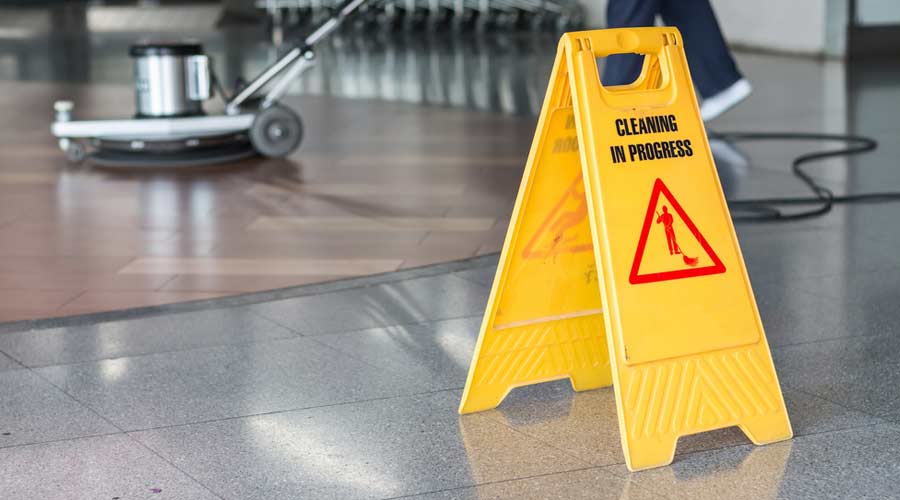
Maintaining floors is a literal pain. The largest surface in any interior, floors take constant abuse from foot traffic, rolling loads, wet weather, ice melt chemicals, spills, and more. Regular upkeep is the only way to keep these expensive building materials in good working order, but the physical act of maintaining floors comes at its own cost. The constant bending, stooping, reaching, pushing, and twisting required by frontline staff often leads to pain and injury.
“The floor is well below the optimal work zone,” explains Curt DeWeese, PT, CEAS, Atlas Injury Prevention Solutions, Grand Haven, Michigan.
This information should come as no surprise. Plenty of statistics illustrate the musculoskeletal dangers of the janitorial industry, but it doesn’t have to be this way. There are ergonomic tools designed to protect frontline workers from repetitive-motion injuries. Choosing the right tool, however, is never cut and dry.
It takes more than the latest tools to protect worker health and safety. It’s a lesson the industry should have absorbed decades ago.
“Just because something is labeled ergonomic, painted yellow and is 15 percent more expensive doesn’t mean it’s the right tool for you,” warns Professor William S. Marras, director of the Spine Research Institute at Ohio State University in a 2002 CleanLink article.
So where does the industry stand on floor cleaning ergonomics today? Preventing work injuries will always be a live issue. But a combination of observation, training, and well-designed tools will go a long way in easing the pain.
Observation and Feedback
Dr. Debra Milek, participatory ergonomics advisor, University of Washington, recalls that observing custodians and collecting their input was an important part of the creation of the Participatory Ergonomics Program, a collaboration between the University of Washington’s Building Services Department and the UW Environmental Health & Safety Department. The practice remains in place today.
“Cleaning tasks are much more complex than many people realize,” she says. “If you don’t observe and ask for input, you’ll never know what any potential issues exist. Engaging with workers and asking for feedback is the heart of what we do.”
For example, Dr. Milek points to observing the use of backpack vacuums. Custodians were just throwing the equipment on and heading off to work.
“We observed that workers didn’t know basic things such as how to adjust the tool to keep the weight on the hips, versus the back and shoulders,” she recalls.
Further observation revealed even more, such as the sharing of backpack vacuums. However, not everyone was adjusting and readjusting the equipment, leading to complaints of discomfort.
“We stopped the sharing when we got feedback about discomfort,” Dr. Milek recalls. “Now each worker has their own, fitted piece of equipment.”
Keith Schneringer, senior director of marketing – Facility Care + Sustainability at Envoy Solutions, San Diego, offers another example from a time when a customer asked him for a lighter-weight lobby dustpan and broom set. Instead of sourcing the latest, greatest, more “ergonomic” tool and calling it good, Schneringer made some observations.
“I noticed a worker using the lobby dustpan and broom to sweep a large area of carpet clean,” he adds. “He was working hard and getting the job done but of course his arms were sore after because he wasn’t using the correct tool for the job.”
Observation is also important for DeWeese. He often sees custodial workers fatiguing their smaller muscle groups when mopping, vacuuming, and using a floor buffer because of improper form.
“The small muscles of the spine and core are not good force generators and don’t have a high level of endurance,” he explains. “It’s easy for them to get overworked.”
Even observing simple tasks, like pushing a loaded janitor cart, can be revealing.
“Turning a heavy cart incorrectly requires a lot of force and can lead to muscle fatigue,” says DeWeese.
Training and Tools Make Tackling Tough Jobs Easier

 The Down and Dirty on Cleaning in Virus Season
The Down and Dirty on Cleaning in Virus Season How Surfactant Use is Expanding in Commercial Cleaning
How Surfactant Use is Expanding in Commercial Cleaning